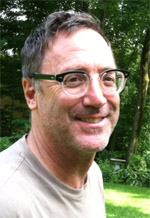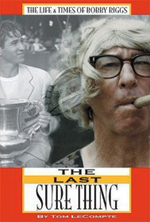Bobby After the War:
Part 2
Tom LeCompte
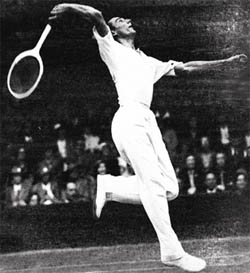
Buoyed by the success of the World Hardcourt Professional Championships (Click Here), Bill Tilden was convinced there was a market for a series of professional tournaments. Enlisting players such as Bobby, Don Budge, Fred Perry, and others, he formed a new organization, the Professional Players Association.
Tilden, a veteran of early professional head to head tours, understood that the head to head format was flawed. Without the threat of elimination, the competitive element was missing and the matches were always susceptible to accusation they were either fixed or the players lacked incentive. Tilden's idea was to create professional tournament play.
The Reality of Purity
Over the years, calls had gone up to open all tournaments to both amateur and professional players, but the ruling amateur establishment staunchly opposed all such proposals, arguing that to do so would sully the "purity" of competition.
Purity, however, had little to do with it. The system of under-the-table payoffs that amateur officials defended was de facto professionalism. What really was at stake was power and control over the game, which amateur officials clung to through their stranglehold on the major tennis events--the national championships and the Davis Cup—and by manipulation of the divisions between the players, the fans, the media, and each other.
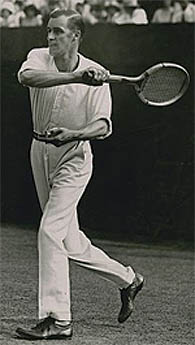
Few clubs would risk the wrath of the amateur establishment by hosting a professional tournament during the amateur season. For example, when Perry and Ellsworth Vines took their tour to Europe in the summer of 1937, the tour nearly died when the British Lawn Tennis Association forbade any affiliate club to host the matches.
The tour was rescued by the hasty construction of a portable wooden court that was hauled around to various outdoor football grounds rather than tennis clubs. The resulting logistics of touring made it impossible to host full-fledged professional tournaments. As a result, the tours evolved into head to head contests between the reigning professional champion and the top amateur challenger.
Usually a warm-up match between two lesser players preceded the feature match--the "animal act," as it was known inside the tour. To avoid competing head on with the more recognized amateur game, the pro tours took place primarily during the winter months.
After the tour, the next top amateur player would be signed for the next year. By his sheer energy and presence, however, Tilden managed to put together what no one before could: a series of six professional tournaments, starting in Southern California and the Southwest, then moving to the Midwest and East.
Tilden did the negotiations, made the deals, got the player commitments, arranged the draw for each tournament, and acted as referee. The players included Bobby, Lester Stoefen, Fred Perry, Wayne Sabin, John Faunce, Frank Kovacs, Gene Mako, and Welby Van Horn.
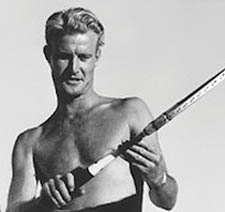
Among the bigger events was a $10,000 tournament in 1946 in Philadelphia sponsored by the Philadelphia Inquirer. Tilden also managed to land a five year contract for the World Professional Grass Court Championships to be held at the country's premier tennis venue, the West Side Tennis Club in Forest Hills.
Tilden's perseverance paid off, as many of the events were successful. Some players complained when they learned that Tilden rigged the draws to ensure he advanced to the latest possible round, but Bobby defended the practice. The way he figured, it was less a matter of fairness than good business, as Tilden was still a major gate attraction. The fact was professional tennis was largely an extension of the entertainment business.
The tour might have succeeded, had not a couple of events intervened. First, in February 1946, after Bobby and Budge's match in the Pan-Pacific Auditorium, Jack Harris, who promoted the two players' prewar tour, convinced them to participate in a 25-match head-to-head tour.
Tilden’s Disgrace
With that, Tilden’s tournament tour lost its top two gate attractions. Second, and more important, was Tilden's conviction and imprisonment for sexual offenses in 1947, an event that shocked and saddened the entire tennis world. His arrest in Los Angeles after being caught with an under-aged male youth made public what had been an open secret among the players.
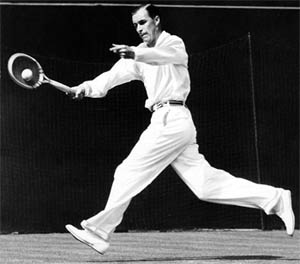
Though Tilden "never made passes at fellow players, as far as I know," Bobby said, "he was overly fond of ball boys." Without Tilden, the driving force for the tour was gone. Though a few tournaments he organized continued on their own, without Tilden's missionary zeal to keep the tour going, plus his ability to bully into line such a diverse group of personalities and egos, the dream of an organized professional tour died.
Bobby and Budge's tour in 1946 was billed as a classic battle of styles: the slugger, Budge, versus the clever boxer, Bobby. To the winner of the tour went the title and the opportunity to headline the next tour. The loser would be left on the sidelines.
Budge, 31, knew he was in the twilight of his career and that this could be his last real chance to cash in on his legendary status. But without his accustomed power on the serve, and frustrated by errors on his overheads, Budge found balls he used to put away with ease against Bobby coming back.
It unnerved him and he changed tactics, trying to rally with Bobby from the baseline, exchanging drop shots and lobs. Instead of outslugging Bobby, he wound up trying to beat Bobby at Bobby's game.
Bobby Dominates--Initially
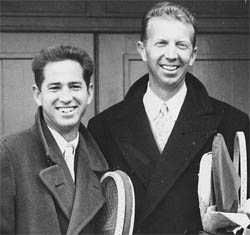
Opening in March of 1946, in Chicago before 7,811 spectators, Bobby won a tense five-set match. As the 25-match tour moved east, Bobby charged out to a 13-2 lead, leaving Budge no chance of overtaking him.
Bobby's dominance worried promoters in the lucrative East Coast markets of New York, Philadelphia, Boston, and Pittsburgh, who saw interest in the tour wane .and their gate receipts collapse.
A fellow player approached Bobby after a stop in Providence, RI. ''Bobby, why don't you let Don win a couple of matches? You're leading him eleven matches to one. It's killing the crowds.
After reportedly telling this person to mind his own business, Bobby agreed to extend the tour to 46 matches. Meanwhile, Budge cast off his vanity and started wearing glasses on court. He also adjusted his playing style.
He whittled Bobby's lead, ending just two matches back, 22 wins to Bobby's 24. Still, the tour was only a moderate financial success, with an average attendance of 3,425 per stop.
For Bobby, all that remained was to win the season-ending U.S. Professional Championships at Forest Hills. This, he figured, would be the crowning jewel of his ascendancy as world pro champion. It was a moment for which he had planned since Budge dismantled him at the professional championships in 1942, and no one could have been more motivated.
On the other side of the court, however, Budge figured that if he could win the title at Forest Hills, he might salvage what remained of his standing as defending champion, or at least keep himself in contention. Besides, he was still an immensely popular figure and the heavy sentimental favorite going into the tournament.
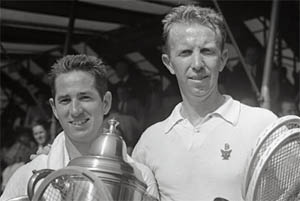
As expected, both Budge and Bobby reached the final, with most fans still expecting Budge to win. Despite the tour results, the years off during the war, and Budge's injury, "Big Red" was still considered the all-conquering king, the irresistible force, while Bobby was, as always, seen as the pesky upstart.
In less than an hour, it was over. To the stunned disbelief of the 10,000 spectators packed into the horseshoe-shaped stadium at the West Side Tennis Club, Bobby dismantled Budge in straight sets, 6-3, 6-1, 6-1.
For a streak of three games in the opening set, Budge looked ready to prove himself the same indomitable player people had known, turning a 0-2 deficit into a 3-2 advantage. But things then went badly awry, as he made error after error: missed overheads, netted volleys, drives hit wide or beyond the baseline.
For his part, Bobby played solidly and with purpose, but this was not the Budge the fans expected, or even the Budge Bobby expected. Fans could hardly believe their eyes. At the awards presentation, Budge made a brief speech. He told the fans how sorry he was that he had let them down so badly, and promised to come back the following year and reward their dedication.
Years later, recalling that year and his disastrous 2-13 start against Bobby on that tour, Budge said he preferred to remember that in his last days he won 20 matches to Bobby's 11.
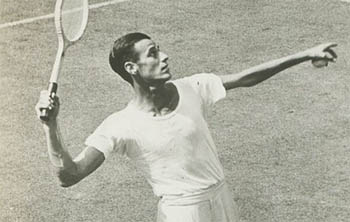
Bobby and Budge played a tour in Europe and South Africa, won 12-6 by Bobby. He also played an aborted tour with Frank Kovacs, man who had allegedly poisoned him before a finals in the amateur ranks. (Click Here.) Kovacs, though still a powerful player had become even more bitter and caustic, intimidating ball boys, showing up late for matches, and offering to fight heckling spectators.
In Philadelphia , Kovacs swigged from a large soda bottle full of Rum Collins during the changeovers. When he finished the bottle, he sent a ball boy out for a refill. When the boy came back with plain soda, Kovacs held up the match while he waited for the youngster to go out and retrieve alcohol.
But all Bobby's success after that mattered little. With Tilden's dream of a series of professional tournaments fallen apart and the amateur game yet to get back on its feet, there was nothing for him to do. Until a legitimate amateur champion emerged, there was no one for him to play against, leaving Bobby little to do but bide his time.



